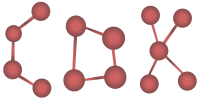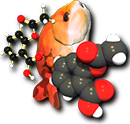
What is ChemMOP?
MOPAC is a general-purpose semiempirical molecular orbital package for the study of solid state and molecular structures and reactions. Molecule optimization driven by mopac is widely applied not only in QSAR/SAR but also in other processes of drug discovery, such as docking. Here, we develop this tool for online-optimizing, providing origin 'ARC' file and converting it to format selected avoiding inconveniences of installing and deploying MOPAC package on machines.






